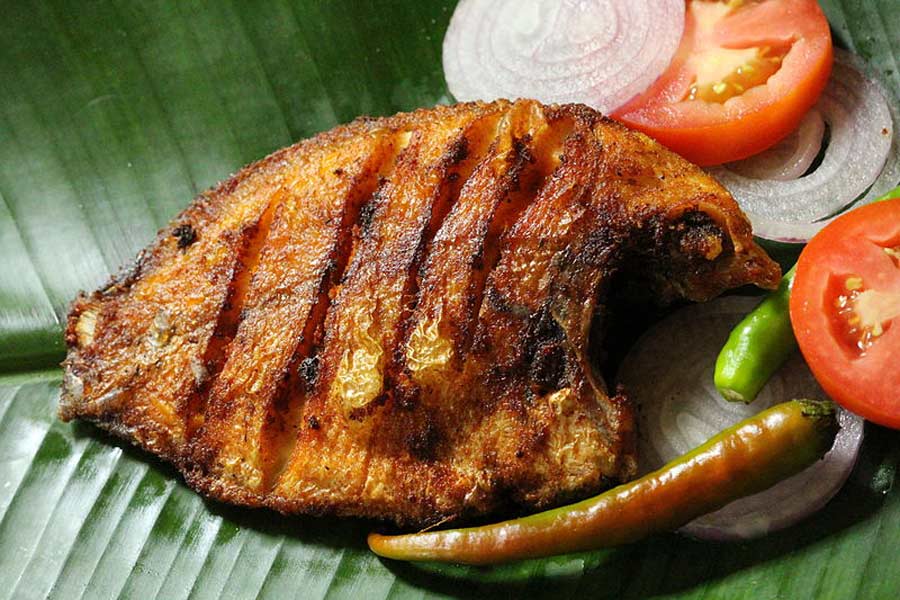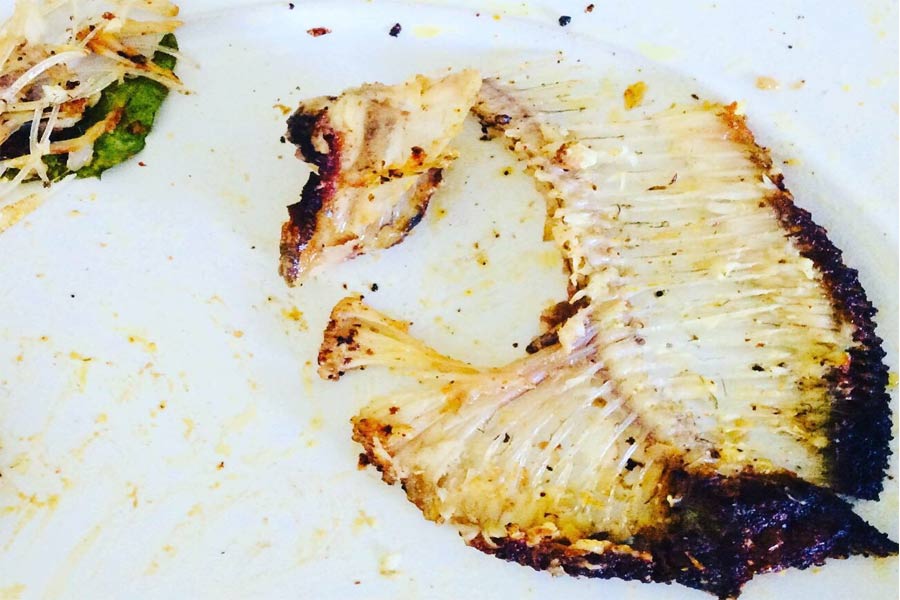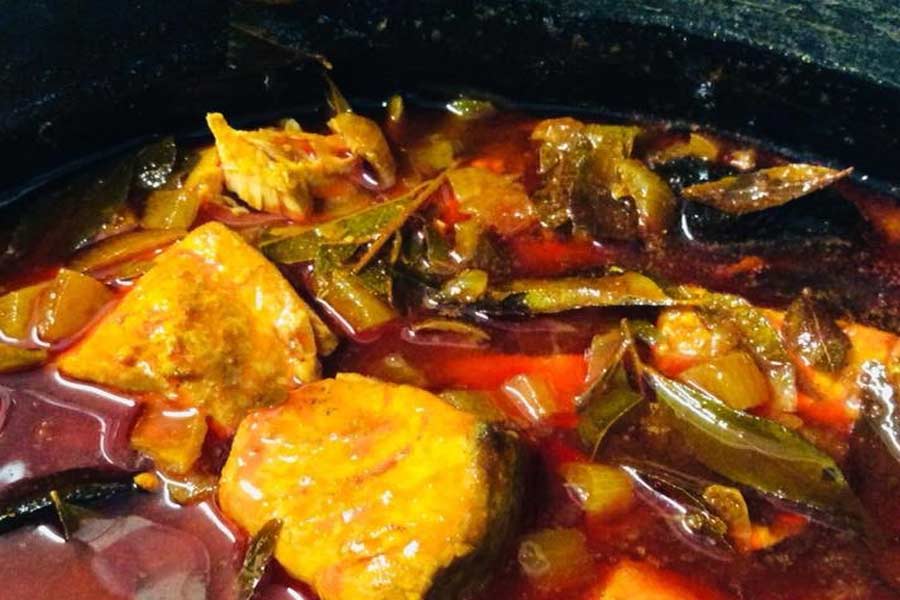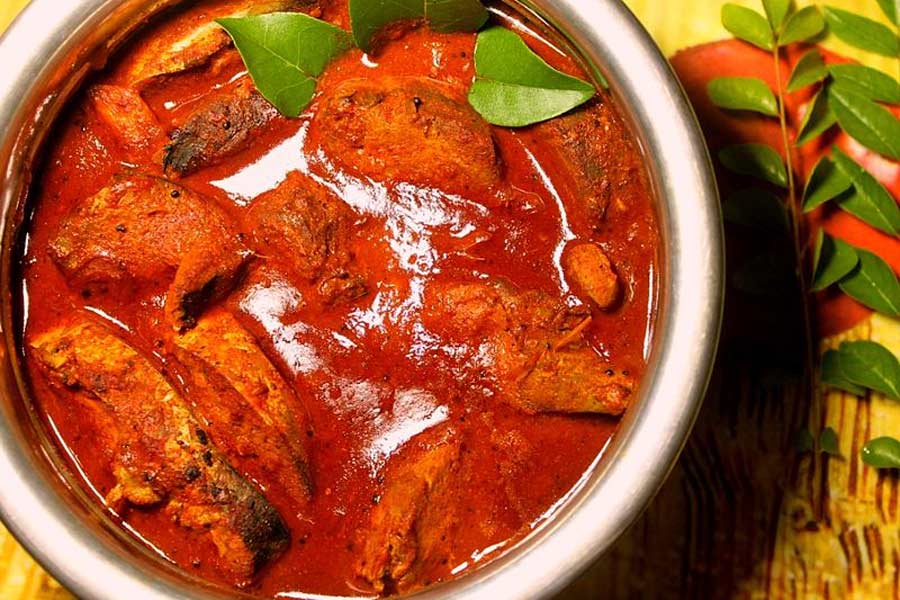“You should stop eating non veg food,” the doctor advised.
“Even fish?” asked my ninety-plus grandfather who was diagnosed with intestinal cancer.
“Yes, fish too.”
“And then?”
The doctor had no answer. And the story goes that the dear old man continued eating fish for lunch and dinner for two more years.
For miles around, there were chunks of land surrounded by water. The only means of transportation was over it, even our livelihood was sustained by it—no surprise then that our lives were irrevocably intertwined with those creatures that could survive only in water. Even for the fifty days of Lent, only meat was ostracized. Maybe, the only day in a year where fish escaped our palates was Good Friday.
Sustainable living was part of lives much before it became a marketing fad. Almost everything was sourced locally. As for fish lovers, there couldn’t have been a better place to sustain themselves—surrounded by fresh water and bordered by the Arabian Sea, it was the best of both worlds. The fish came in fresh or tinged with salt.

Long before the days of commercial ponds with species like rohu and catla, there were the local ones. Grown in the small canals that served as borders between houses or found freely in the rivers that flowed sanguinely by, were the ferocious kaari, the yellow koori, the slippery varaal, the shining paral, the playful pallathi and the numerous tiny ones that didn’t even have a name, they were just called aattumeen. Then there were the ones that came from the sea—ayala, mathi, kilimeen, netholi—and the so called king—neymeen. For us Kuttanadans, there was, is and will be only one king, our own karimeen.
As anecdotes go, there is one about karimeen. The flesh is embedded in its strong thorny bones and eating it is an art in itself—and how well a prospective bridegroom would fit into a girl’s family depended on how clean he could get the bones on his plate.

The ingredients of the fish curry were mostly home grown. A handful of small onions, few dashes of chilli, turmeric and pepper powder, a few pods of kudam puli (coccum) and that was it. Grated coconut—ground or just squashed together with green chillies and ginger on a grinding stone, or coconut milk formed the base when there was enough time on our hands. All cooked in coconut oil, but of course!
The dishes were of three standard types, the yellow mish mash of peera, the fiery red vevichathu and the quintessential fry. On unhurried days, would come the gravy with coconut milk. This one appeared normally around the mango season; the raw pieces of the fruit lent its sourness to the mouthwatering curry—the famous Alleppey Fish Curry. Yes, the place even has a fish curry named after it.
That brings me to the mystery of the famed ‘karimeen pollichathu’. Steeped in sautéed spices, wrapped in banana leaves softly wilted in fire with tender care and steamed in a mud pot smeared with coconut oil, this is a delicacy that adorns the tables in five-star hotels and local toddy shops alike. Yet, I have no memory of this dish being prepared in any of our homes. Quite baffling, I would say. Maybe it was the slightly elaborate prep work that was required that kept our matter-of-fact mothers and grandmothers away from it.
We are fish crazy and we even have it for breakfast. I kid you not. The caveat though is that, it has to be a special occasion or you would have to be an honoured guest. Yes, I am talking about the tender pieces of fish cooked in spice-laden coconut oil, onions, green chillies and ginger sautéed just so, pieces of tomato that is not allowed to lose itself in the thin milk that is extracted from a coconut—the mappaas. Finally garnished with thick creamy coconut milk and curry leaves freshly plucked from the yard behind the kitchen and a hint of coconut vinegar, this is one dish to die for. Imagine dunking pieces of appams that are fluffy in the middle and crisp lacey at the edges or freshly baked bread in this. Ambrosia is made of moments like these. Nothing but karimeen would do for this. We would grudgingly make a concession in certain seasons when the king was not readily available and settle for neymeen instead.
No tale of fish will be complete without the lip smacking pickles. These were usually made with small fishes like netholi or slightly chunkier pieces of tuna or choora as it is called. Deep fried in oil, mixed with julienned ginger, garlic and green chillies, chilli and fenugreek powders with plenty of curry leaves and the key ingredient coconut vinegar, this had to be stored in earthen pots for a few days for the spices to blend and seep into the fish pieces.

Yearning for home and its numerous flavours after a hard day at work, I step into the Indian super market here and my eyes pop out when I spot, of all species, karimeen, so far away from home. I greedily grab two packets, rush home, marinate some for frying and, with the remaining pieces make the simple red curry that used to taste so good when my mother made it. After serving it to the family, I ask eagerly, “How is it?” The daughter is blunt to the point, “It has no taste.” Well, of all people I should have known, the king has to be respected. Cook him fresh and he will oblige your taste buds. Else, you have to settle for memories.
Cover Pic: Kerala Red Fish Curry, Credit: Wikimedia Commons







